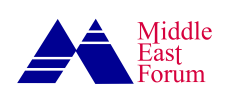With U.S. warplanes targeting three nuclear facilities inside Iran, the U.S. officially engages in the Israel-Iran conflict. The Iranian regime and its proxy militias in Iraq had threatened that any direct U.S. involvement would trigger retaliation against American interests in the region. Those threats must be taken seriously.
U.S. military installations in Iraq and Syria have remained relatively vulnerable to drone and rocket attacks by Iranian-backed groups.
The U.S. military must immediately fortify its various bases across Iraq and Syria, particularly those located in the Kurdish regions of both countries. While other U.S. assets elsewhere in the Middle East are equipped with more robust defensive systems, U.S. military installations in Iraq and Syria have remained relatively vulnerable to drone and rocket attacks by Iranian-backed groups.
The U.S. maintains two military bases in Iraqi Kurdistan and another one in the Kurdish-controlled northeast of Syria, as well as several smaller outposts across both regions. These installations have played a critical role in U.S.-led efforts against the Islamic State over the years.
The U.S. consulate in Erbil, the capital of Iraqi Kurdistan, and the nearby U.S. base at Erbil airport are equipped with an air defense system that have been largely effective in intercepting drones and mortars launched by Tehran’s proxies in Iraq. However, the C-RAM system’s defensive capabilities are primarily designed to counter small-scale threats.
Given the rising tensions in the region, the U.S. should anticipate more sophisticated and large-scale attacks from Iran and its allies and immediately deploy advanced anti-missile defense systems to deter and counter such attacks.
The MIM-104 Patriot system possesses the capabilities needed to meet this challenge. While the U.S. deployed this system to Iraqi Kurdistan following the outbreak of the Gaza war, it should urgently dispatch another one to Kurdish Syria. Doing so would provide U.S. forces with a valuable strategic edge across the broader theater. This would be especially important if Lebanese Hezbollah, another Iranian proxy, chooses to join the fight against U.S. forces. With a limited number of troops already deployed in both countries, the U.S. stands to benefit significantly from a defense system capable of intercepting tactical ballistic and cruises missiles.
The Terminal High Altitude Area Defense (THAAD) system also could play a more crucial role in achieving this goal.
The Terminal High Altitude Area Defense (THAAD) system also could play a more crucial role in achieving this goal. The Biden administration deployed THAAD to Israel following the October 7, 2023, attacks, and it has been used effectively to intercept drones and missiles fired by the Houthis in Yemen. The system is designed to intercept short, medium, and intermediate-range ballistic missiles. That’s precisely what the U.S. needs to protect personnel and bases in Iraq and Syria now.
Given the recent drawdown of U.S. troops and the closure of bases in Syria—alongside the announced conclusion of the U.S.-led Global Coalition’s mission against the Islamic State in Iraq by September 2025—bolstering American military presence in the Kurdish regions emerges as a strategic imperative.
Installing powerful air defenses at U.S. facilities Iraq and Syria is not only essential for protecting U.S. personnel and assets but also critical to safeguard local Kurdish partners who have been targeted because of their alliance with the United States and remain vital in counterterrorism operations. These deployments would send a strong message to Iran, its proxies, and other malign regional actors that the U.S. is committed to defending its interests and allies throughout the region.








